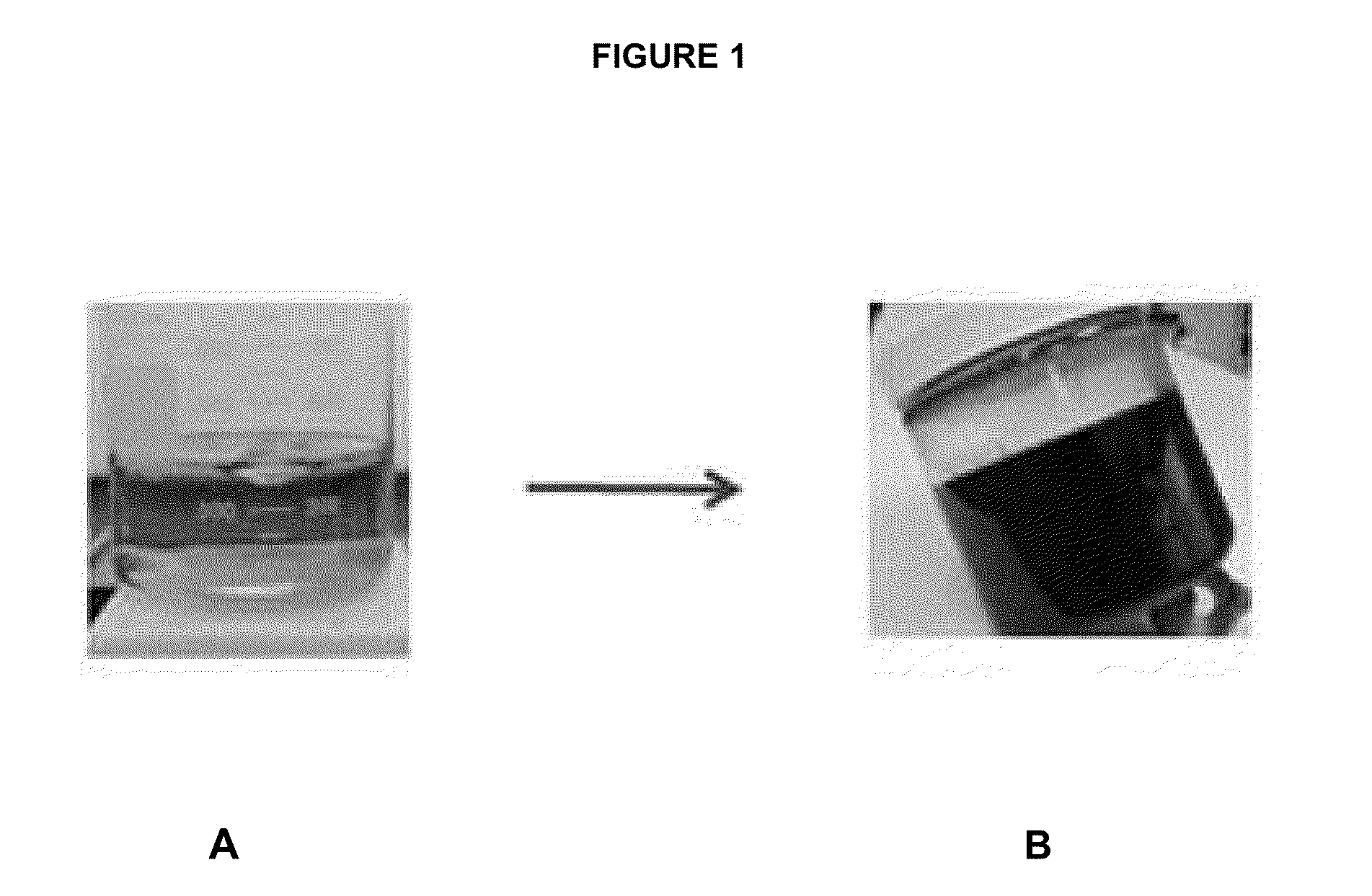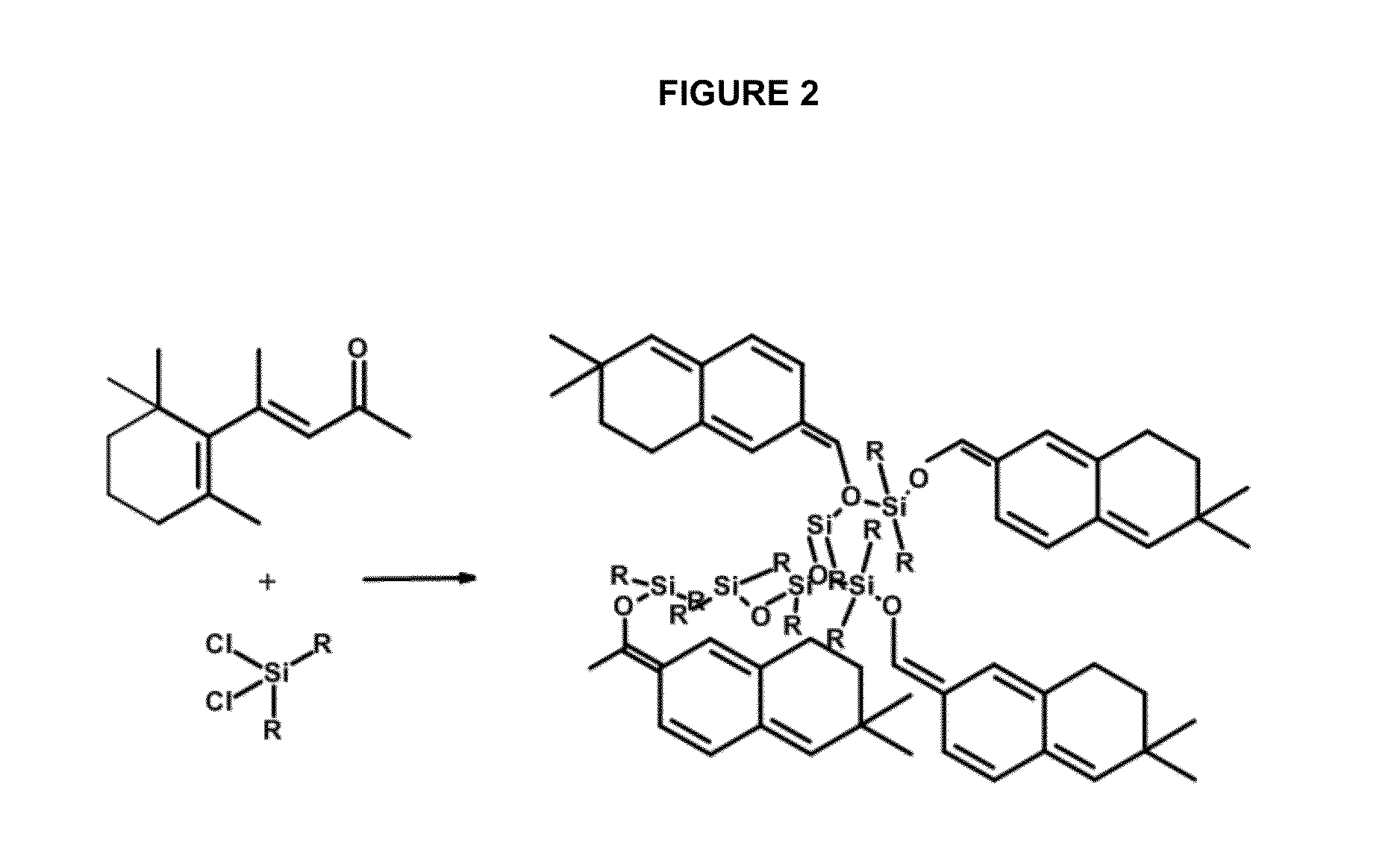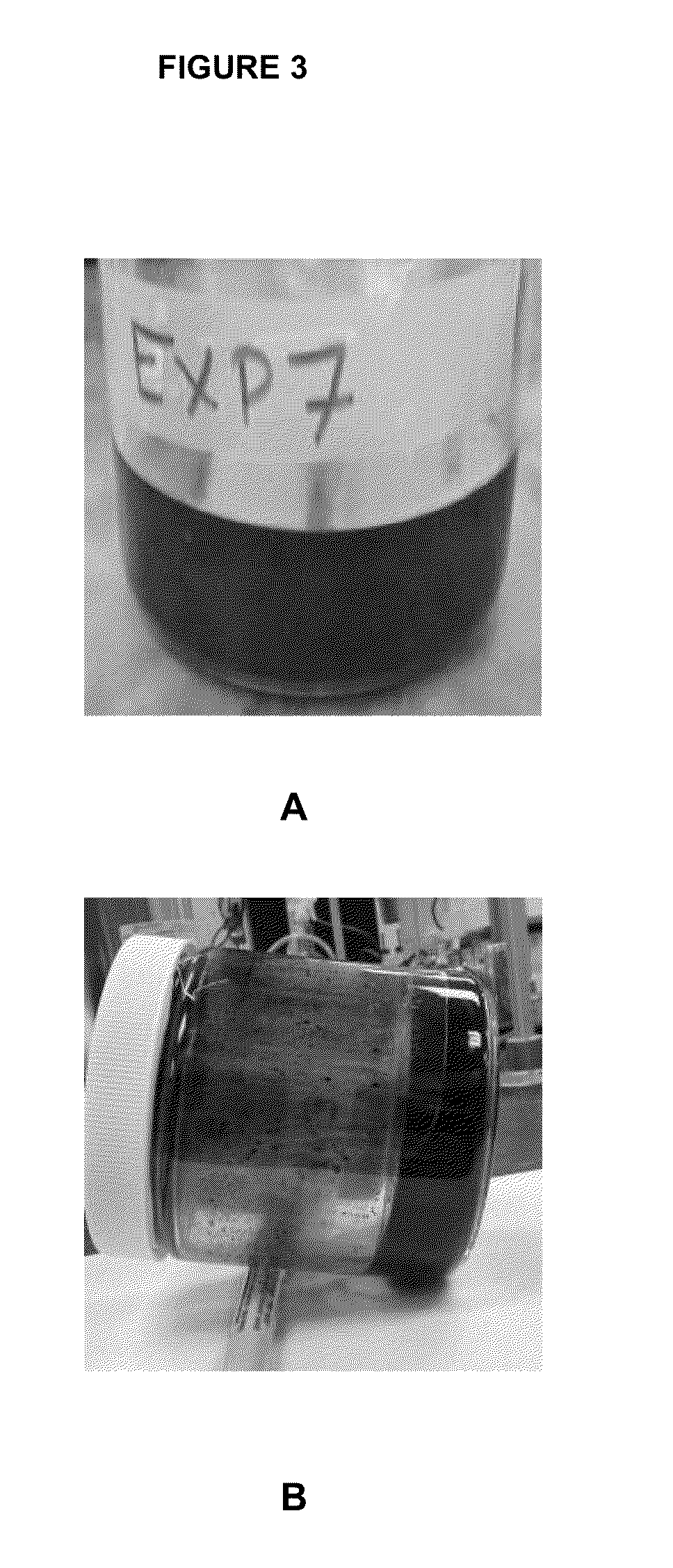Sol-gel method for synthesis of nano-porous carbon
a nano-porous carbon and gel-based technology, applied in the field of gel-based nano-porous carbon synthesis, can solve the problems of limited supercapacitance application, limited specific capacitance of coconut-shell-based devices, and difficult control of inherent pore structure or addition of other functional groups into the carbon to enhance performance by changing the surface chemistry, etc., to achieve rapid polymerization, high electrical conductivity, and high specific capacitan
- Summary
- Abstract
- Description
- Claims
- Application Information
AI Technical Summary
Benefits of technology
Problems solved by technology
Method used
Image
Examples
example 1
Polymerization of β-Ionone Using Dichlorodimethylsilane
[0071]In a one-liter beaker, 250 mL of β-ionone (Sigma-Aldrich, St. Louis, Mo.) was stirred for two minutes using a magnetic stirrer. Catalyst dichlorodimethylsilane, Si(CH3)2Cl2 (8.5 mL) (Sigma-Aldrich) was added slowly. Stirring was continued for 5 minutes and the stir bar was then removed. The mixture was transferred to a 500-mL (16 oz.) glass jar. The mouth of the jar was covered with Teflon tape before the jar cap was screwed on. The jar was allowed to stand at room temperature for 1,000 hours.
[0072]The same procedure was repeated using 17 mL, 34 mL, and 68 mL of dichloro-dimethylsilane. The results obtained are shown in FIG. 2 and summarized in Table 1.
TABLE 1mLGramsHoursSi(CH3)2Cl2Si(CH3)2Cl2agedResults8.59.041000thick black liquid, no solid1718.091000thick black liquid, no solid3436.18384black solid formed (see FIG. 2)6872.35450 + 500at 450 hrs, very thickviscous liquid; no solid,even at 950 hrs
[0073]Although the experim...
example 2
Polymerization of 2-Acetylfuran Using Dichlorodimethylsilane
[0074]In a one-liter beaker, 100 g of 2-acetylfuran (Sigma-Aldrich) was stirred for a few minutes using a magnetic stirrer. Catalyst dichlorodimethylsilane, Si(CH3)2Cl2 (25 mL) (Sigma-Aldrich), was added slowly. Stirring was continued for 5 minutes and the stir bar was then removed. The mixture was transferred to a 500-mL (16 oz.) glass jar. The mouth of the jar was covered with Teflon tape before the jar cap was screwed on. The jar was allowed to stand at room temperature for 190 hours. A black solid formed.
example 3
Polymerization of Furfuryl Alcohol Using Dichlorodimethylsilane
[0075]Using a similar procedure to that described in Example 1, various amounts of furfuryl alcohol (Sigma-Aldrich) were subject to the polymerization conditions summarized in Table 2. In a 1 liter beaker, the varying amounts of dichlorodimethylsilane were added to varying amounts of furfuryl alcohol as shown in Table 2, with and without acetone and / or NaOH pellets. The addition of acetone moderates the reaction. In other cases, anhydrous NaOH anhydride was added to slow down the polymerization reaction. The NaOH reduces the acidic nature of the silane catalyst. In the cases where an immediate explosive reaction did not occur, the reaction mixture was aged overnight. Dry ice was used to cool the outside of the reaction vessel where indicated in Table 2 to reduce the reaction temperature.
TABLE 2RemovedAcetoneSilaneFurfurylNaOHImmediatelyfrom DryFurther Processing:Exp #(mL)(mL)(mL)(g)Dry Iceafter MixingIceResult15018.5500N...
PUM
| Property | Measurement | Unit |
|---|---|---|
| Temperature | aaaaa | aaaaa |
Abstract
Description
Claims
Application Information
 Login to View More
Login to View More - R&D
- Intellectual Property
- Life Sciences
- Materials
- Tech Scout
- Unparalleled Data Quality
- Higher Quality Content
- 60% Fewer Hallucinations
Browse by: Latest US Patents, China's latest patents, Technical Efficacy Thesaurus, Application Domain, Technology Topic, Popular Technical Reports.
© 2025 PatSnap. All rights reserved.Legal|Privacy policy|Modern Slavery Act Transparency Statement|Sitemap|About US| Contact US: help@patsnap.com



